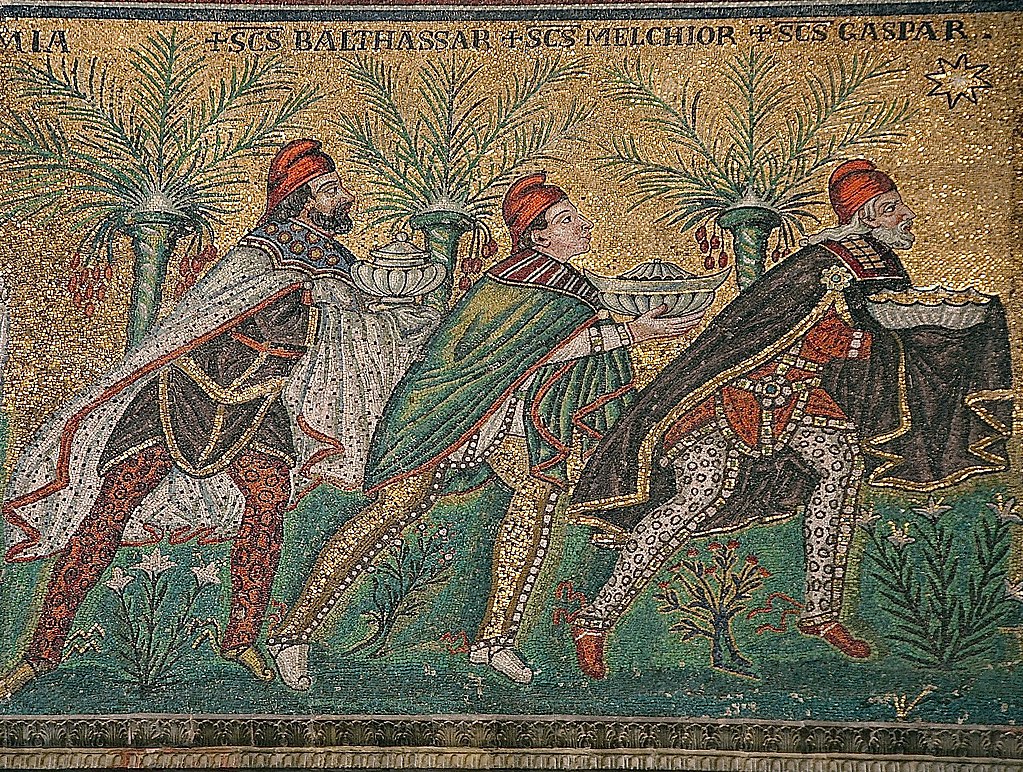- Goose
- Cogito ergo sum
 Offline
Offline 
- Registered: 1/29/2015
- Posts: 13,427
La Befana and Epiphany in Italy
La Befana and Epiphany in Italy
The Feast of the Epiphany, celebrated January 6 with a national holiday in Italy, and the tradition of La Befana are a big part of Italian Christmas celebrations. Epiphany commemorates the 12th day of Christmas when the three Wise Men arrived at the manger bearing gifts for Baby Jesus. The traditional Christmas holiday season in Italy lasts through Epiphany.
La Befana
Italy's traditional celebration includes the tale of a witch known as La Befana who arrives on her broomstick during the night of January 5 and fills the stockings with toys and sweets for the good children and lumps of coal for the bad ones.
According to the legend, the night before the Wise Men arrived at the manger they stopped at the shack of an old woman to ask directions. They invited her to come along but she replied that she was too busy. Then a shepherd asked her to join him but again she refused. Later that night, she saw a great light in the sky and decided to join the Wise Men and the shepherd bearing gifts that had belonged to her child who had died.
She got lost and never found the manger.
Now La Befana flies around on her broomstick each year on the 11th night, bringing gifts to children in hopes that she might find the Baby Jesus. Children hang their stockings on the evening of January 5 awaiting the visit of La Befana.
The origins of La Befana may actually go back farther, to the Roman's pagan festival of Saturnalia, a one or two week festival starting just before the winter solstice. At the end of Saturnalia, Romans would go to the Temple of Juno on the Capitoline Hill to have their augers read by an old crone. Many pagan traditions were incorporated into Christmas celebrations when Christianity became main stream. La Befana was a good substitute for the old woman who read the augers. The saying augur originated with this practice, too, as it was common to wish someone good augers.
La Befana Festivals
The town of Urbania, in Le Marche region, holds a 4-day festival for La Befana from January 2-6. Children can meet La Befana in La Casa della Befana. This is one of the biggest celebrations for La Befana in Italy.
The Befane races, Regatta delle Bafane, are held in Venice on January 6. Men dressed as La Befana race in boats on the Grand Canal. See Regatta delle Befane on Living Venice.
Epiphany Processions and Living Nativities
In Vatican City, following another Epiphany tradition, a procession of hundreds of people in medieval costumes walk along the wide avenue leading up to the Vatican, carrying symbolic gifts for the Pope. The Pope says a morning mass in St Peter's Basilica to commemorate the visit of the Wise Men bearing gifts for Jesus.
Florence's historical procession, Calvacata dei Magi, usually starts from Pitti Palace in the early afternoon and going across the river to the Duomo. Flag throwers perform in Piazza della Signoria.
Milan holds an Epiphany Parade of the Three Kings from the Duomo to the church of Sant'Eustorgio.
Rivisondoli, in the Abruzzo region (Abruzzo map), has a reenactment of the arrival of the 3 kings on January 5 with hundreds of costumed participants.
Many towns and villages in Italy have similar processions, although not as elaborate, ending with a living nativity scene, presepe vivente, where costumed people act out the parts of the nativity. Living nativities, presepi viventi, are often presented December 24-26 and repeated for Epiphany.
Churches in cities and larger towns often hold special concerts, usually free.
The Three Magi, Byzantine mosaic c. 565, Basilica of Sant'Apollinare Nuovo, Ravenna, Italy (restored during the 18th century).
As here Byzantine art usually depicts the Magi in Persian clothing which includes breeches, capes, and Phrygian caps.
Last edited by Goose (12/31/2016 6:24 am)
We live in a time in which decent and otherwise sensible people are surrendering too easily to the hectoring of morons or extremists.
- Tropicalfox
- Exchanger
 Offline
Offline 
- Registered: 2/01/2015
- Posts: 124
Re: La Befana and Epiphany in Italy
In our family, we traditionally gift children on Christmas with something simple, and gift adults on Reyes, plus big time for the children... it has been like this for us because financially it's sometimes very hard to do both at a time... plus I wanted to preserve both traditions for all... once the kids are knowledgeable about Santa, they are added to the adults... I find the Three Kings celebration more in accordance with what gifting is, since that is when the Christ child was presented with their gifts for Him... but hey, I love the entire concept of the season!!! In Puerto Rico we start celebrating on Thanksgiving Day and continue straight through to January 14th because "las octavitas" is added onto Reyes... it's a winding down period from the boozing and parrandas that prepares people for working again with no holiday "spirits" involved!
- flowergirl
- Exchanger
 Offline
Offline - Registered: 2/03/2015
- Posts: 1,840
Re: La Befana and Epiphany in Italy
Interesting--thanks for posting.
 1 of 1
1 of 1